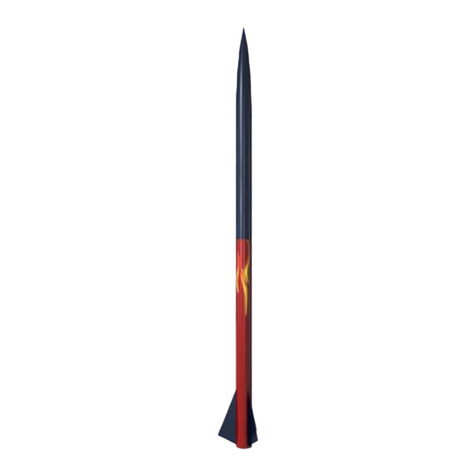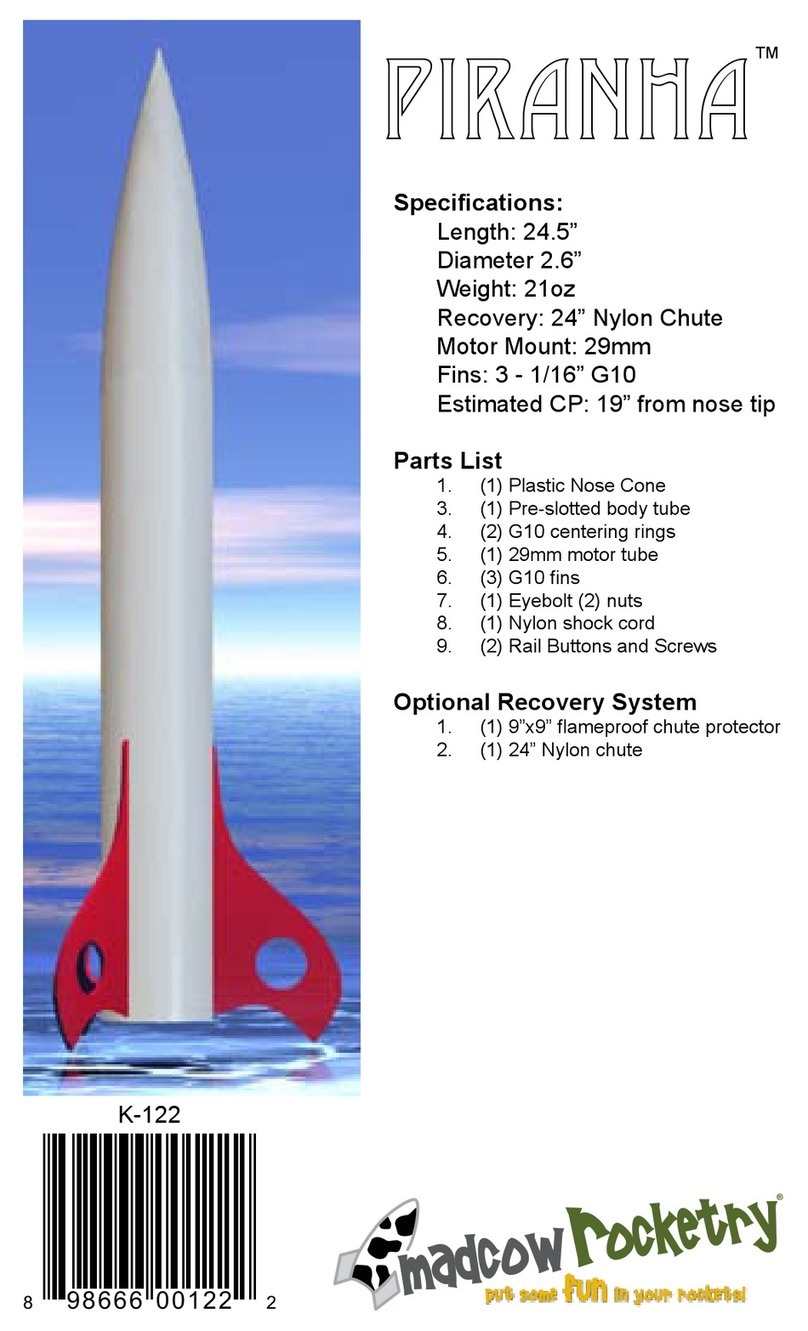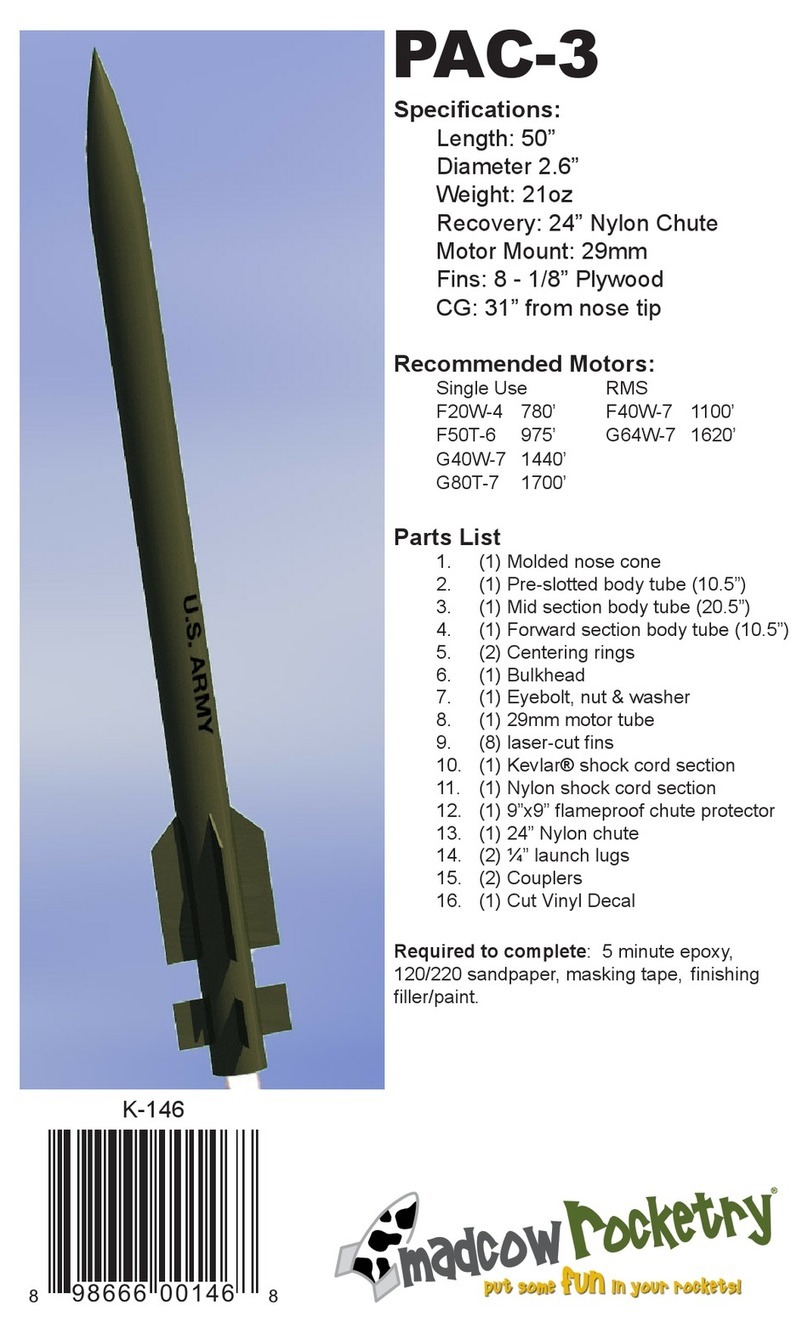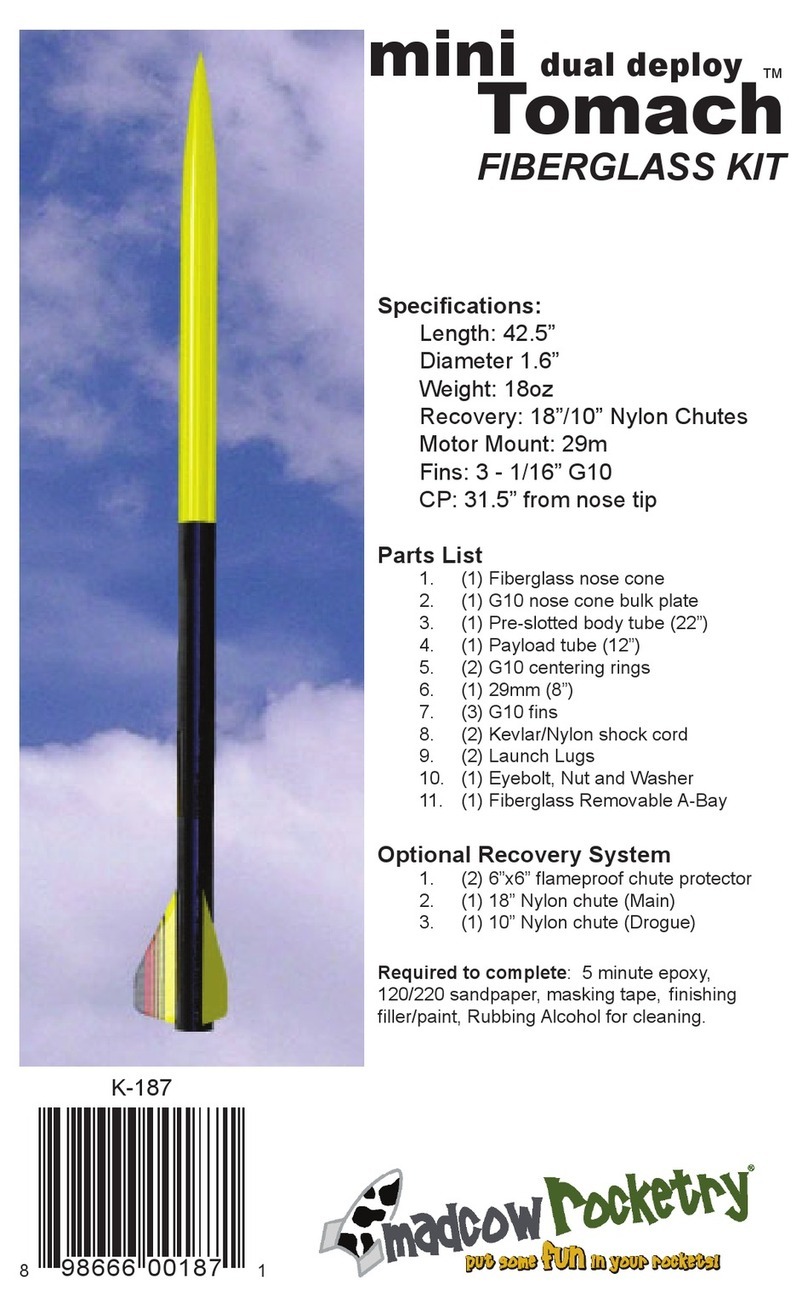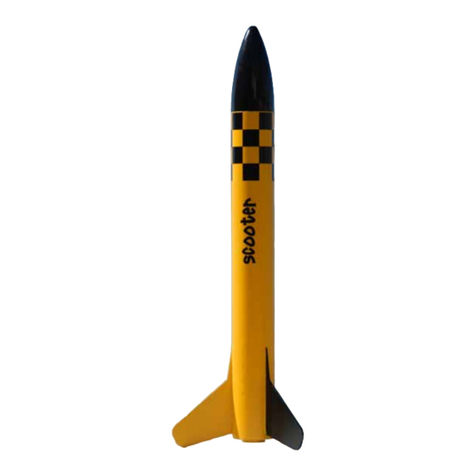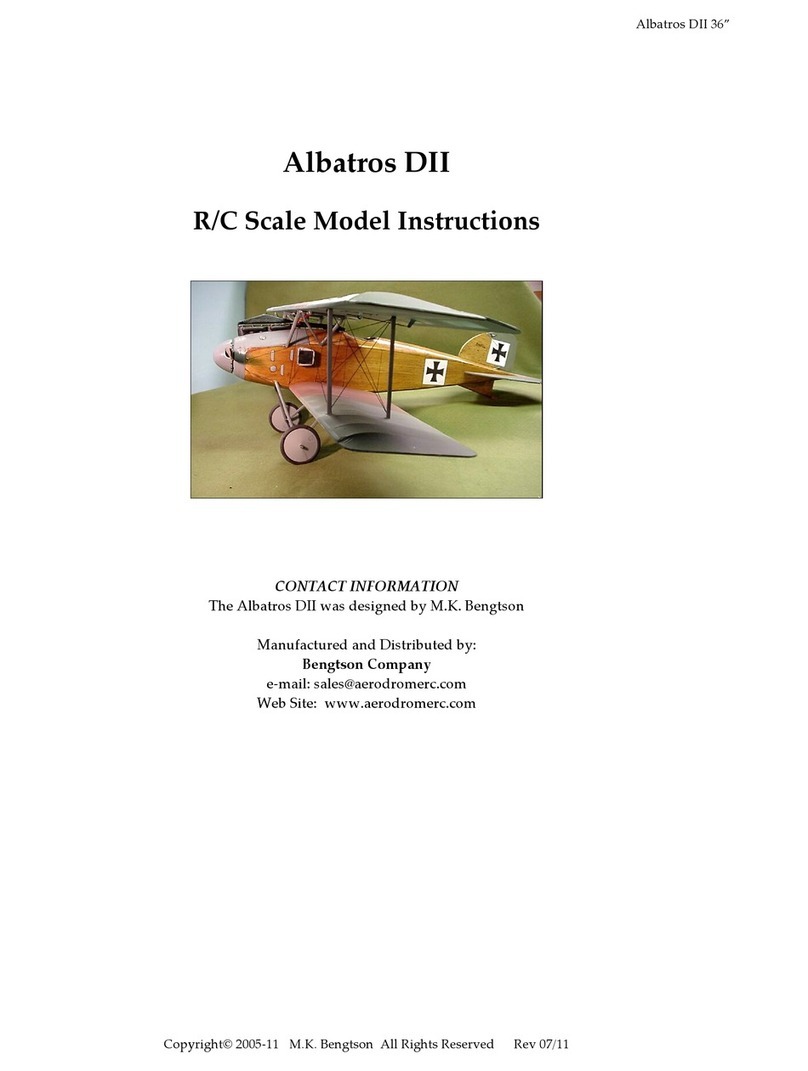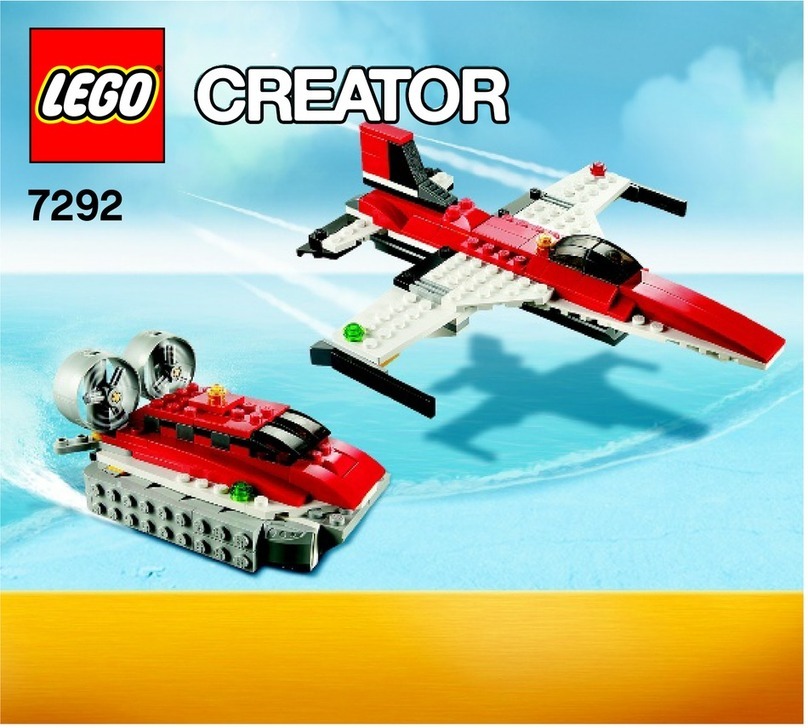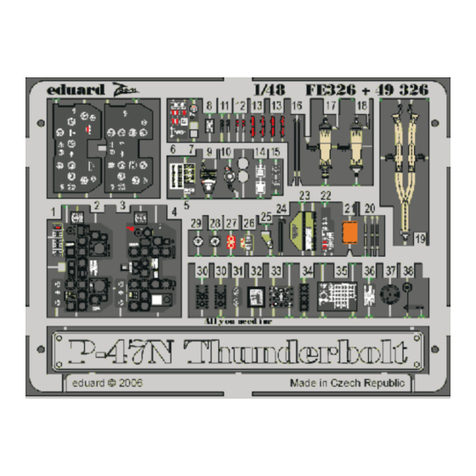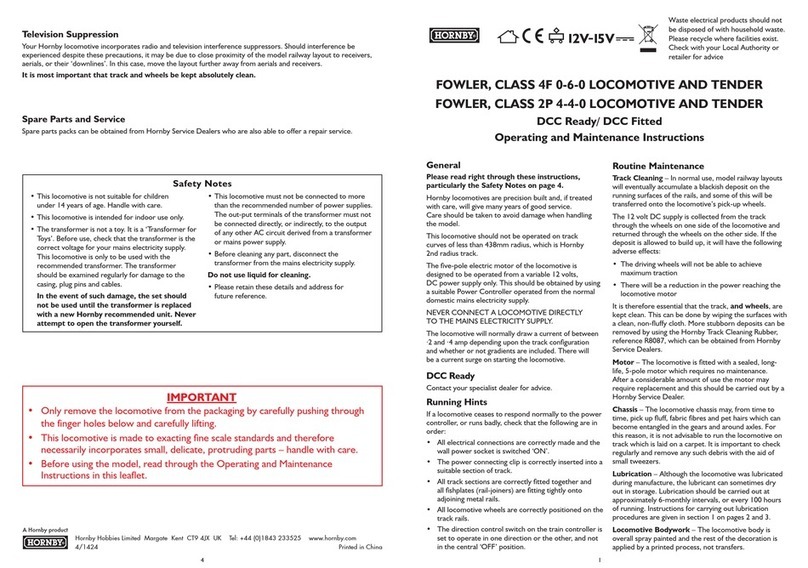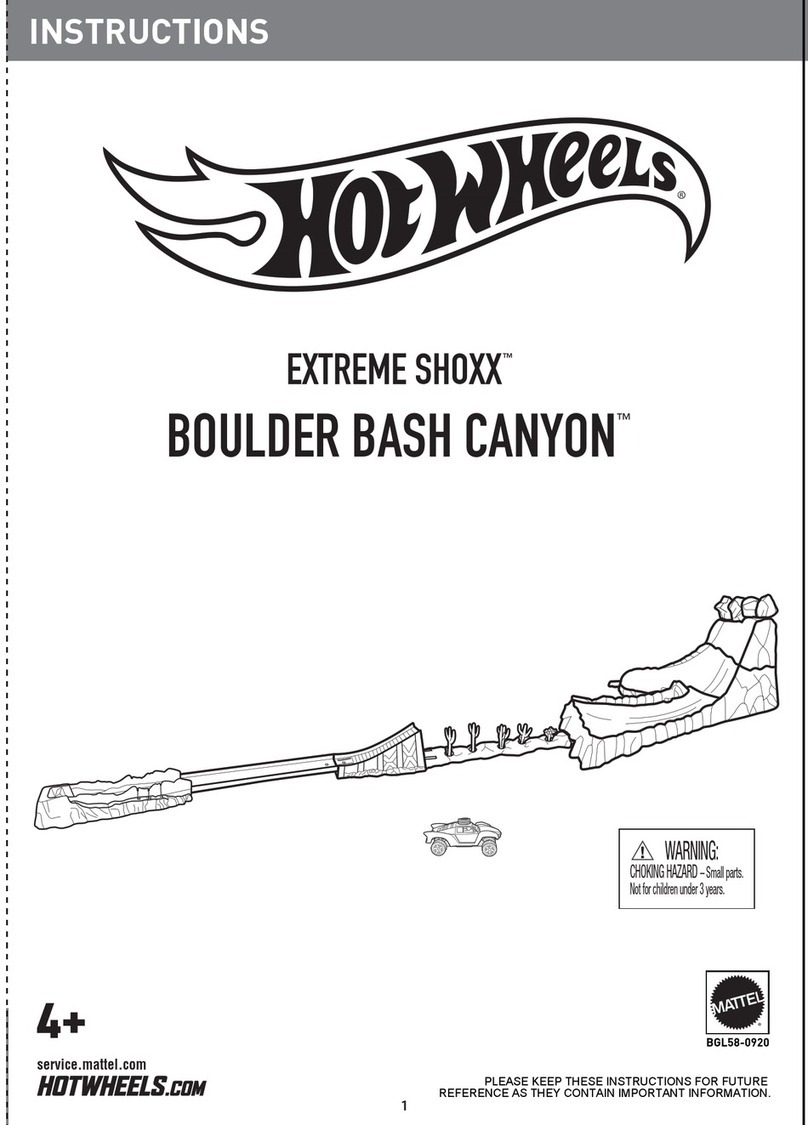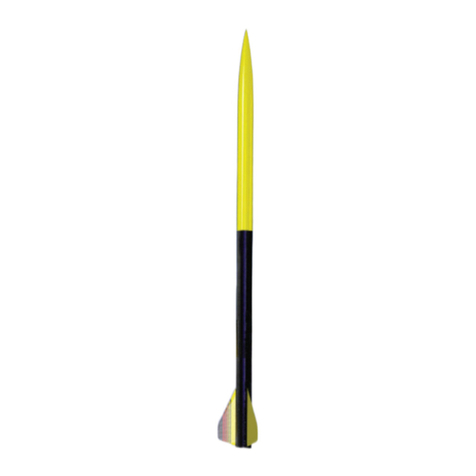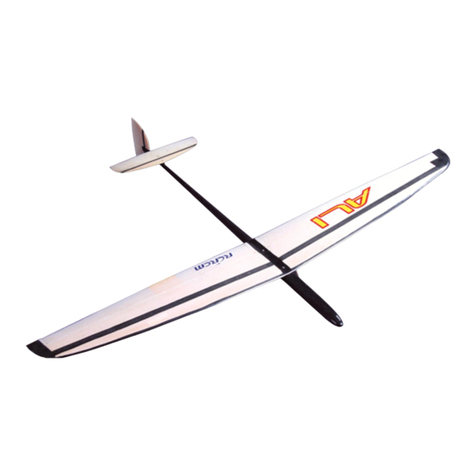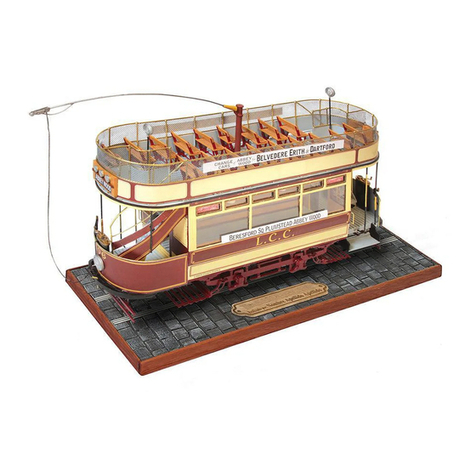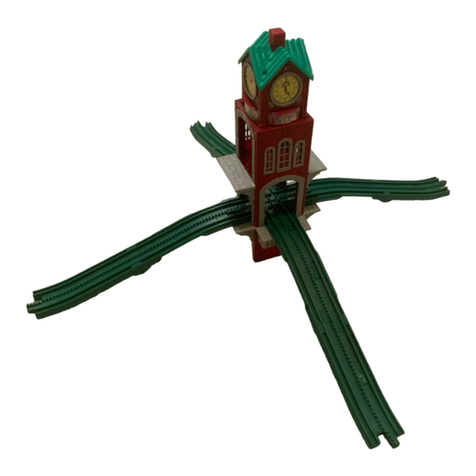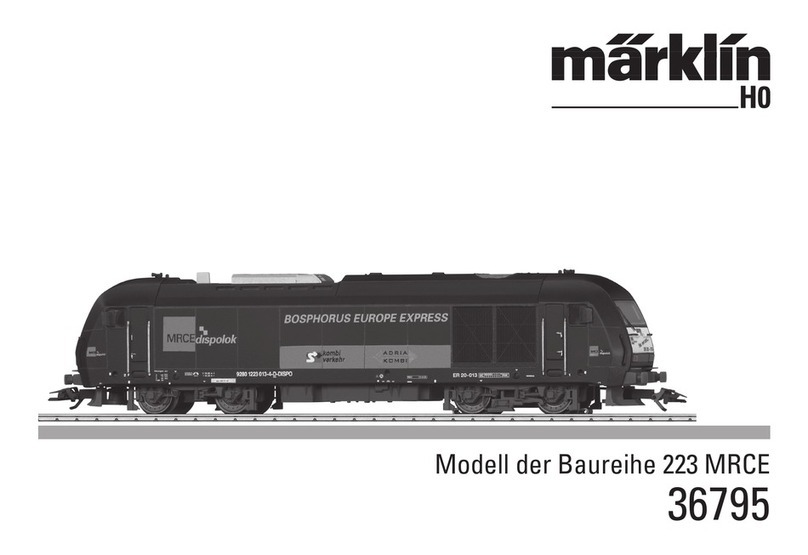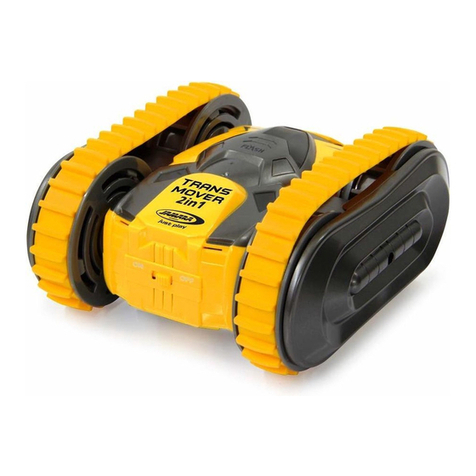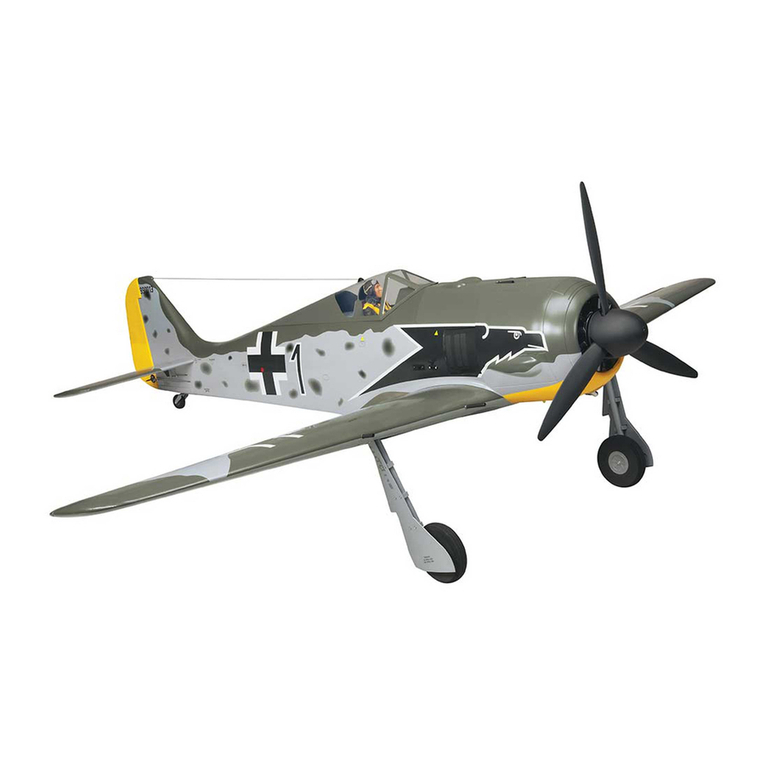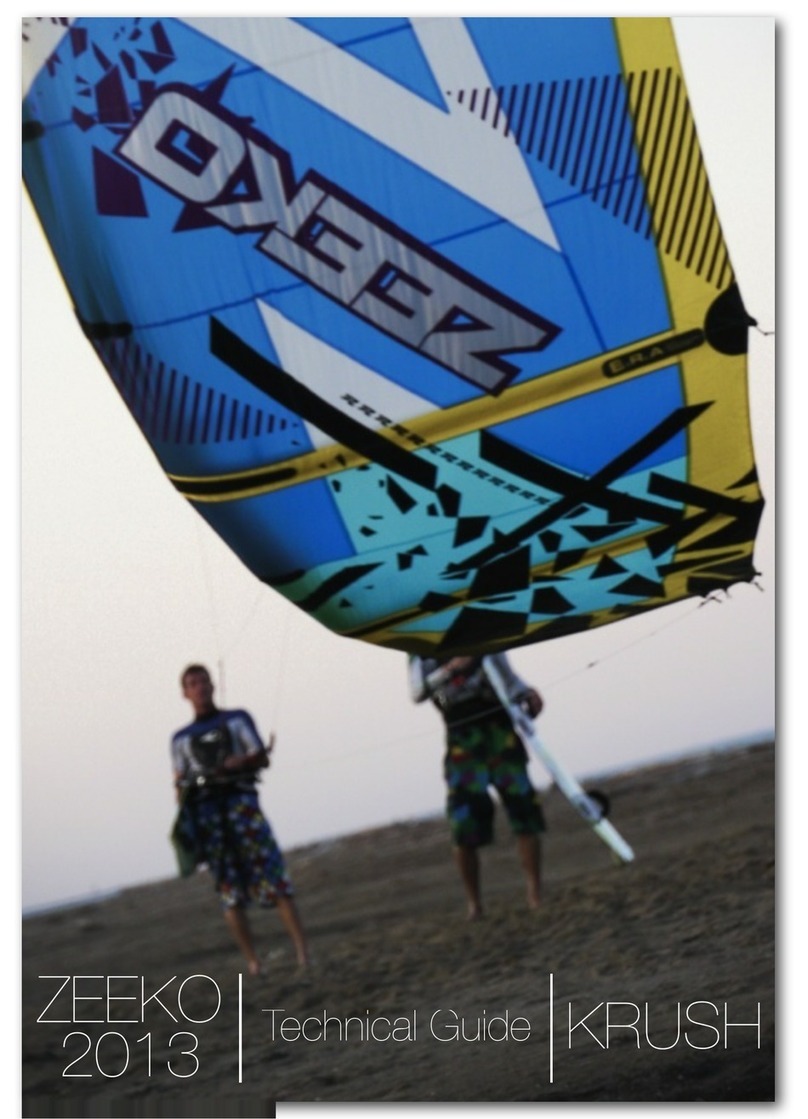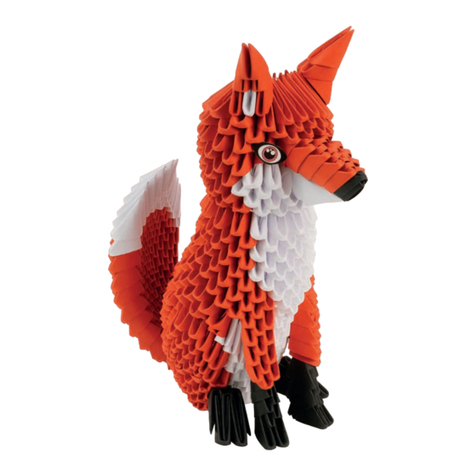
2 ©2015 MadCow Rocketry™ mini Squat™ mini Squat™ ©2015 MadCow Rocketry™ 3
Please make sure you read all directions and understand how to assemble your model
beforeyoustartconstruction.Itisalsoagoodideatotestteachpartbeforeassembly
–somemanufacturingtolerancesmayrequirelightsandingbeforenalassembly.
Laser cut parts will exhibit varying amounts of charring on the edges depending on the
density of the plywood. The charred edges do not interfere with bonding and do not
need to be cleaned before assembly. In most cases the charring will be cleaned up
duringsandingfornishingandpainting.
Step 1 – Motor Mount Assembly
Sand the glassine coating off of the motor tube. Glue will not stick very well to the
glassineandroughingthetubewillhelpthegluestick.Testtthecenteringringsover
the motor mount tube and sand if necessary. The ring should slide snug over the motor
tubewithoutdeformingit.Alsotesttthecenteringringsinthebodytubeandsandif
necessary.
Cut a 1/4” wide slot 3” from the aft end of the motor tube. Apply some wood glue to the
thrustring(1/4”longringthattsinsidethemotortube)andinsertthethrustringfrom
Step 2 – Shock Cord Attachment
The shock cord in this kit consists of a shorter
section of Kevlar and a longer section of nylon
cording. The two sections should be tied together
using a single overhand, ring bend or double
sherman’sknot.TheKevlarsectionwillbe
attached to the motor mount and the nylon section
will be attached to the nose cone.
Wrap the end of the Kevlar shock cord around the
forwardendofthemotortubeandtackinplacewithCA.Makesurethecordlaysat
enough so it will not interfere with the body tube when you slide the motor tube inside.
Apply some epoxy to the cord to hold it in place. Make sure the cord is secure and will
not come loose later with ejection forces that will pull on the shock cord.
Push cord in corner and
tack with epoxy
3”
theforwardendofthemotortubeuntilitisushwiththe
slot cut earlier. Be careful not to push the ring past the
slot or you will not be able to put the motor clip in next.
Insert one end of the motor clip
into the slot cut earlier. Use a
piece of masking tape to hold
the clip in place.
Line up the inside slot on one of the centering rings
over the motor clip and slide the ring over the aft
end of the motor tube until there is 3/4” exposed.
Apply wood glue around the centering ring to hold
it in place
Glue the remaining centering ring
with the ouside notch close to the
forward edge of the motor tube with
about 3/4” of motor tube exposed.
3/4”
Step 3 – Insert Motor Tube Assembly into Body Tube
Testteachofthensintotheprecutnslots.Becauseplywoodthicknessvaries,you
may need to sand the slot to the correct width. Wrap the shock chord into a small bundle
andstuffitinsidethemotortubeforthisnextstep.Testtthemotortubeassemblyinto
thebodytubetoensureasnugt.Sandthecenteringringsifnecessary.Whenyou
aresatisedwiththet,spreadsomeepoxyontheinsideofthebodytubeandslide
the forward centering ring of the motor assembly into the body tube. Make sure you
have the motor assembly facing the right
way! Spread some more epoxy on the inside
edge of the body tube before sliding the rear
centering ring into the body tube. Continue
sliding the assembly inside the body tube
until the aft centering rings are just clear of
thenslots.It’sagoodideatotesttanin
each slot here before the epoxy sets. Make Ensureringsareclearofthenslots
Step 4 – Fin Assembly
Using a door jam or small section of angle stock, pencil a line halfway between two of
thensthatextendsfromthefronttothebackofthebodytube.Thislinewillbeused
latertoalignthelaunchlugs.Testteachofthensintotheprecutnslots.Then
shouldseatrmlyagainstthemotortube-sandeachnorslotifnecessary.Whenyou
aresatisedwiththet,applysomeepoxytotheendofthentangthatwillcontactthe
motortube.Also,spreadathinlayerofepoxyoneachsideofthentang.Slidethen
intoplaceandcheckthealignment.Continuerecheckingthenalignmentuntilyouare
suretheepoxyhasset.Cleananyexcessepoxyfromaroundthenjoint.Repeatfor
theremainingns.Next,applyepoxylletstobothsidesofeachnbyapplyingathin
beadofepoxyatthen-bodytubejoing.Carefullysmooththeepoxylletswithyour
ngerbeforetheepoxysets.Alloweachllettosetbeforerotatingtheairframeforthe
nextllet.
Step 6 – Balancing Your Model
Assembleyourmodelandinsertthelargestmotoryouintendtoy(orsimulatethe
weight with a substitute) and ensure that the CG is at least 1 body diameter in front of
theestimatedCPpointspeciedontherstpage.TheCPpointismeasuredfromthe
tip of the nose cone. If the CG is behind the desired point, add weight inside the nose
cone by pouring lead shot into the nose cone tip and adding some epoxy. You can drill
a 1/4” hole in the base of the nose cone to make it easier to pour lead shot and epoxy
inside the nose cone.
Step 5 – Launch Lug
Mark the CP point along the launch lug line you made in the previous step. Make sure
you measure the CP point from the tip of the nose cone and NOT the end of the body
tube. Apply a small amount of epoxy on the launch lug line about ¾” long on the CP
mark. Press one of the launch lugs into the epoxy and ensure that it is aligned with the
launch lug line previously drawn on the body tube. You can site down the tube and look
through the launch lug to make sure it is straight. Similarly epoxy the second launch
lugabout2”fromtheaftendofthebodytube(alignedwiththeaftendofthens).Site
down both launch lugs and make sure they are both aligned. If you have a ¼” launch
rod, you can use this to ensure that both lugs are aligned properly.
